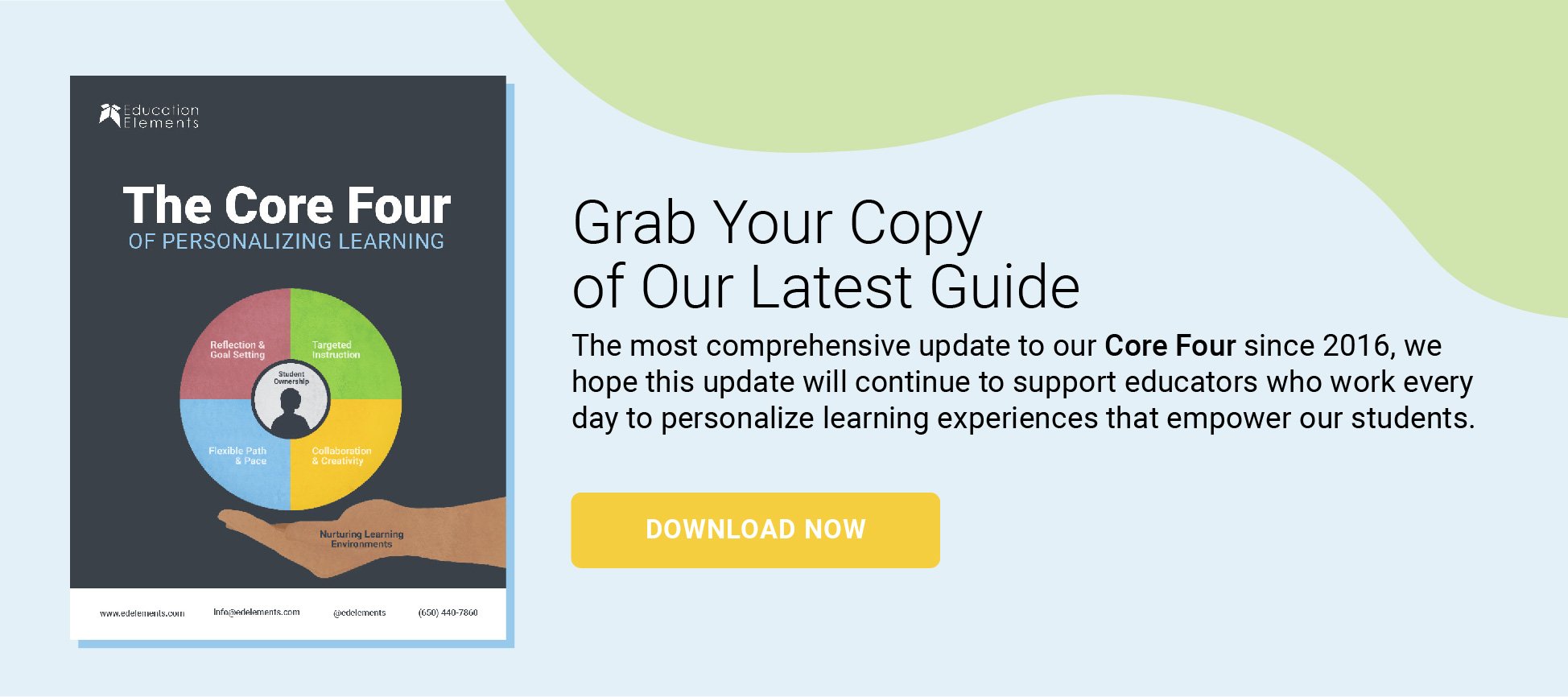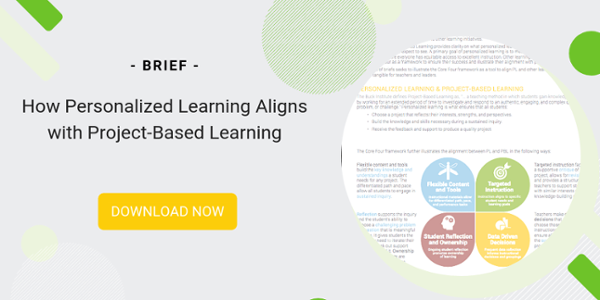Recently, I had the opportunity to facilitate a workshop with our partners at Loudoun County Public Schools and the Buck Institute for Education to do some deep thinking about the connections between project-based learning and personalized learning. I am very passionate about these two pillars of instruction, and I'm doubly passionate about their intersection.
 In case you're unfamiliar, project-based learning is an instructional approach in which student learning within any given unit builds towards resolution of a complex, real-world problem. Project-based learning pushes teachers and students to think boldly about how work completed in class connects to the thorny and interesting world beyond school. Done well, it demands critical thinking, creativity, and collaboration among teachers, students, and community members.
In case you're unfamiliar, project-based learning is an instructional approach in which student learning within any given unit builds towards resolution of a complex, real-world problem. Project-based learning pushes teachers and students to think boldly about how work completed in class connects to the thorny and interesting world beyond school. Done well, it demands critical thinking, creativity, and collaboration among teachers, students, and community members.
Personalized Learning is also extremely important. Without careful consideration of who learners are, what they need to know, and what they’re interested in, the projects they complete in school become boring, frustrating, or isolating.
I think we need to challenge ourselves to design learning with students rather than simply for them, and personalized learning and project-based learning are excellent frameworks to help us make that shift.
Dive Deeper Into the Core Four With this White Paper
The Core Four white paper includes a framework, actionable ideas, and insights from districts who have
successfully implemented personalized learning.
With Loudoun and Buck, I was excited to explore the connections between personalized learning and project-based learning and what both meant to these organizations, as well as what those connections meant to Education Elements. While I’d thought about these questions for myself, I hadn’t crystallized their similarities and differences in a way that I would consistently remember and revisit over time. And here’s something I’ve learned about clarity of communication: If you explain something differently every time you talk about it, you probably still have some kinks to work out in your thinking.
During our workshop together, I offered questions as a facilitator, but mainly listened while we explored the rationale for grounding learning in personalized learning and project-based learning, particularly how personalized learning could make project-based learning more impactful. From our conversations, I found that there were three concepts that helped me think about how personalized learning could enhance the great project-based learning work that was already taking place in Loudoun County Schools: access, relevance, and ownership.
3 concepts that helped me think about how personalized learning could enhance the great project-based learning
Access
Personalized learning helps students access content during project-based learning. Different students will have different needs in working towards the end goals of a project. A personalized learning approach grounds teachers in student needs as they work towards authentic products. By contrast, an approach that is not responsive to individual student needs might assume all students should work through the same activities as they build towards authentic products.
One of the projects in my classroom that demanded a strong understanding of personalized learning concepts was “The Room 13 Restaurant.” For the Room 13 Restaurant, we would turn lessons on ratios and proportionality into recipes for a student-run restaurant that served families a meal during “Restaurant Night.” The problem was that students’ knowledge of ratios, and their actual interests in cooking, were all over the place.
My application of personalized learning started with unpacking what students needed to know to be successful and diagnosing their pre-existing knowledge on core concepts. Then, I lined up lessons accordingly.
Sometimes we met in whole group for deep engagement on “big ideas” lessons. Other times we broke into smaller groups for “mini-lessons” so that students could revisit concepts on which they were struggling or engage with more complex material after mastery. Approaching project-based learning planning with a mindset of personalization helped make the skills and analysis required of real-world project-based learning more accessible to students along the way.
Relevance
Personalized learning brings relevance to students' project work. Often, teachers pre-select project topics and products for project-based learning without consulting students. A more personalized approach would use student interests, perhaps from check-ins or learner profiles, to inform the trajectory of a more responsive project-based learning unit. The art here is for teachers to build a creative bridge from student interests to content standards--even when there seems to be a mile-wide gap between the two.
Back in Room 13, we were studying ratios. However, I also spent some time gathering data on students’ larger goals and interests so that different facets of our end project would appeal to different learners.
For example, let’s say you had some serious cooking chops. Then a lot of your work would involve explaining how you’d use ratios to perfect recipes. More into graphic and visual design? We needed consistent design elements that could fit on a flyer, a menu, or a poster. All about the benjamins? You might join the pricing team (a pretty sophisticated group of 12-year olds) to figure out the dollars and cents behind the food we could make and how much we needed to charge to break even.
Individual student interests helped to inform unique roles and end products, though all the while I maintained a project focus on a consistent set of core concepts and standards.
Ownership
Finally, a personalized learning approach can create a important sense of project ownership among students. This is something that I did not do very well in my first attempts to organize big projects. While still perfecting my own management and planning, I set up deadlines and teams myself in order to make sure everything ran as smoothly as possible. Students had some choice over their end products, but the process they worked through in teams was very much driven by my need to maintain order.
Looking back, I believe I missed an opportunity to have students own their learning process as well as their learning products. Students could have set more flexible timelines depending on their needs, established their own group norms, and celebrated their progress towards goals.
I wish I would have encouraged them to learn how to backwards plan as a team. I wish I would have built in more time for them to reflect explicitly on their academic progress and on the connections between math content and real world scenarios. And I wish I would have spent more time helping them reflect on what they were learning about themselves as individuals during these units--like what they valued about their work, what they learned about themselves through their relationships with their classmates, and who they saw themselves becoming as a result.
Fortunately, I’m now in a position to be able to use reflections like these to help practitioners think through how personalized learning and how it can help address pressing instructional and organizational problems. Each new workshop is a challenge to connect the priorities of great partners like Loudoun to the latest developments and thinking we observe in the field, like new thought around project-based learning. Through it all I’m hopeful that what I can share, from the classroom to the boardroom, leads others to do better than I could have done myself.
For a deeper exploration on the topic, check out our brief on how personalized learning aligns with project-based learning.






